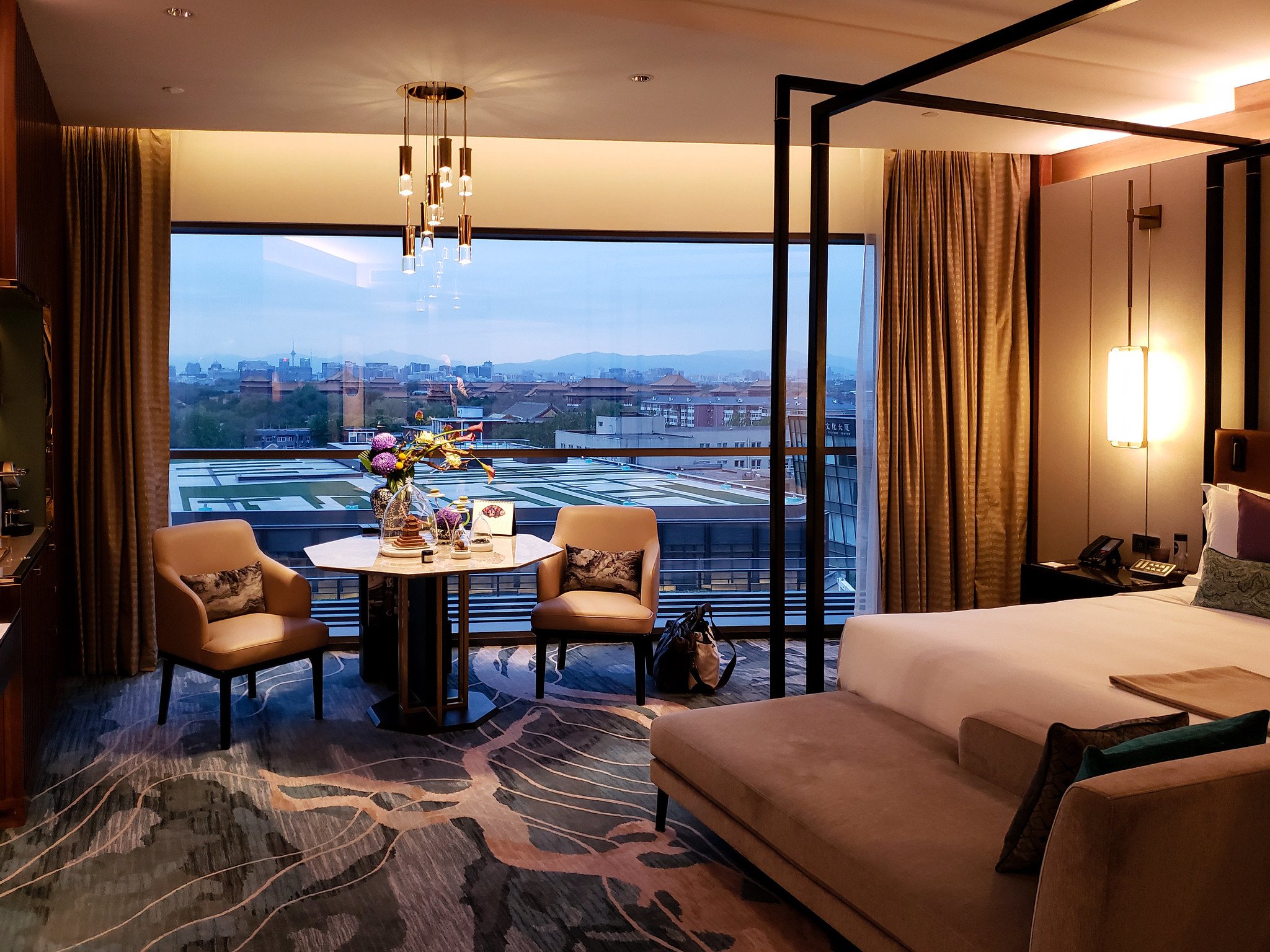6 reasons to extend your stay in Beijing
In 2019, Beijing got its first Mandarin Oriental. Actually, MO was supposed to open ten years earlier, but was thwarted by a stray firework at Chinese New Year and burnt to a cinder. I stayed in 2019 and wrote this review for the Telegraph. The big selling point is undoubtedly the Forbidden City views from west-facing rooms. Another highlight was the edible chocolate model of the Forbidden City corner tower in our room. Quite a treat.
By chance, I was later commissioned to write some articles for their online portal. One City, 5 Ways, and 6 Reasons to Extend Your Stay in Beijing, both replete with gentle MO plugs. Here’s one below.
Mandarin Oriental Beijing, Forbidden City view room
The Forbidden City, Temple of Heaven, Summer Palace, the Great Wall – Beijing rivals any world capital for spectacular sights, with more than enough to keep most visitors busy. But it’s when you’ve ticked off the big sights and stepped away from the tourist trail that the soul of the city starts to reveal itself.
Take a Food Tour
Beijing is a delicious adventure for foodies, but if you don’t speak or read Chinese, its tastiest morsels could remain tantalizing out of reach. That’s where companies like UnFoodTours (www.unfoodtours.com) comes in, guiding eaters from one alleyway hole-in-the-wall to the next, serving up everything from Beijing-style hot pot to braised donkey-meat sandwiches, with a side order of fun food facts. Free-flow of local beer is included in the price, and for the brave there is also erguotou, Beijing’s sorghum-based firewater.
Go Fly a Kite
Invented in China around the time of Confucius, kites remain a popular pastime among Beijing’s retirees, who fly them in parks and plazas across the city. A little-known gem close to Houhai Lake is Three Stone Kite Shop (www.cnkites.com, 25 Di’anmen Xidajie), one of the last traditional kite crafters in the capital. The handmade, hand-painted designs include dragons, phoenixes and other mythical creatures of various sizes. The owner’s great-grandfather served at the Forbidden City during the late Qing Dynasty, making kites, lanterns and fans for the royal court.
Hike the Unrestored Great Wall
The vast majority of tourists visit a handful of ticketed Great Wall sections outside Beijing, where the battlements have been rebuilt and the hillsides furnished with cable cars and souvenir stalls. There remains, however, hundreds of kilometres of ‘wilderness wall’ within range of the city, where crumbling, difficult-to-access ruins snake through remote mountain country. Beijing Hikers (www.beijinghikers.com), a long-established outfit, runs guided hikes several times a week, each graded for difficulty.
Visit a Secret Temple
Right next to the Forbidden City, but passed over by almost all visitors, is the Workers’ Cultural Palace, formerly the Imperial Ancestral Temple where emperors would go and pay their respects to their royal forebears. Grand temple halls are surrounded by ancient cypress and pine trees, but the highlight is the Sacrificial Hall, the largest structure built entirely of precious nanmu wood in China. The carpentry inside, faded by the years, is exquisite, and the scale of the chamber itself will take your breath away.
Find the remnants of Beijing’s City Wall
Up until the middle of the 20th century, Beijing was defined by its mighty Ming dynasty walls, 20 metres thick and 15 metres high, stretching for 24km right around the city. Dismantled to make way for a subway line and ring road, they are now a distant memory, save for a 1.2km stretch preserved in the southeast of the city. The Ming City Wall Ruins Park affords a tell-tale glimpse of Beijing’s once iconic battlements, and connects on to the awe-inspiring Southeast Corner Watchtower, which has an exhibition of historic Beijing photographs inside.
Visit the Old Summer Palace
The splendid Imperial gardens, buildings and waterways that comprise the Summer Palace is one of Beijing’s most famous attractions. Much less well known is the Old Summer Palace nearby, considered so beautiful it was known as the ‘Versailles of the East’, before it was looted and destroyed by British and French soldiers in 1860. These days a public park, you can wander among shattered hunks of marble and stone between meadows and waterways, as you imagine how it might have looked to the Qing emperors in its heyday.
